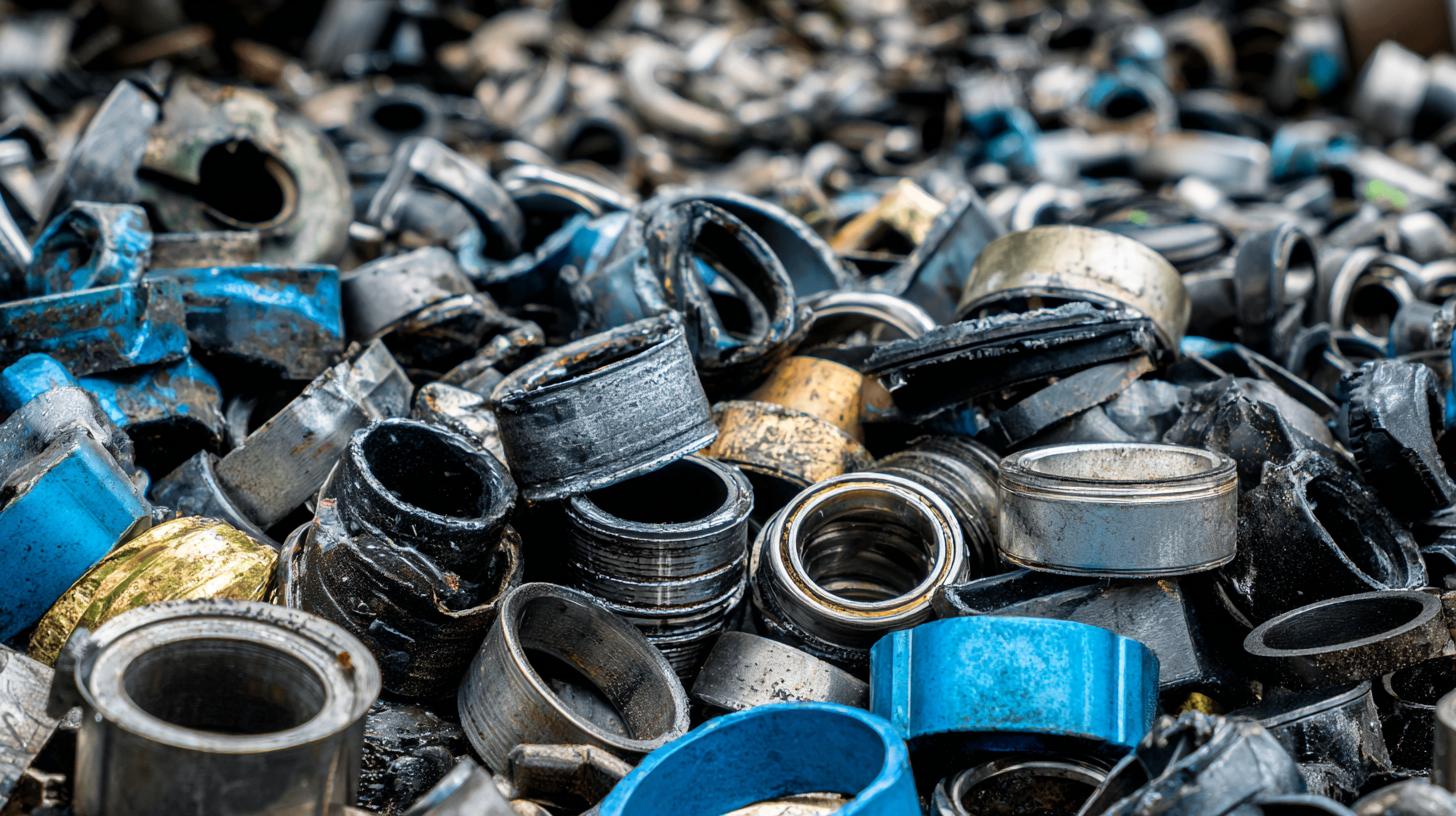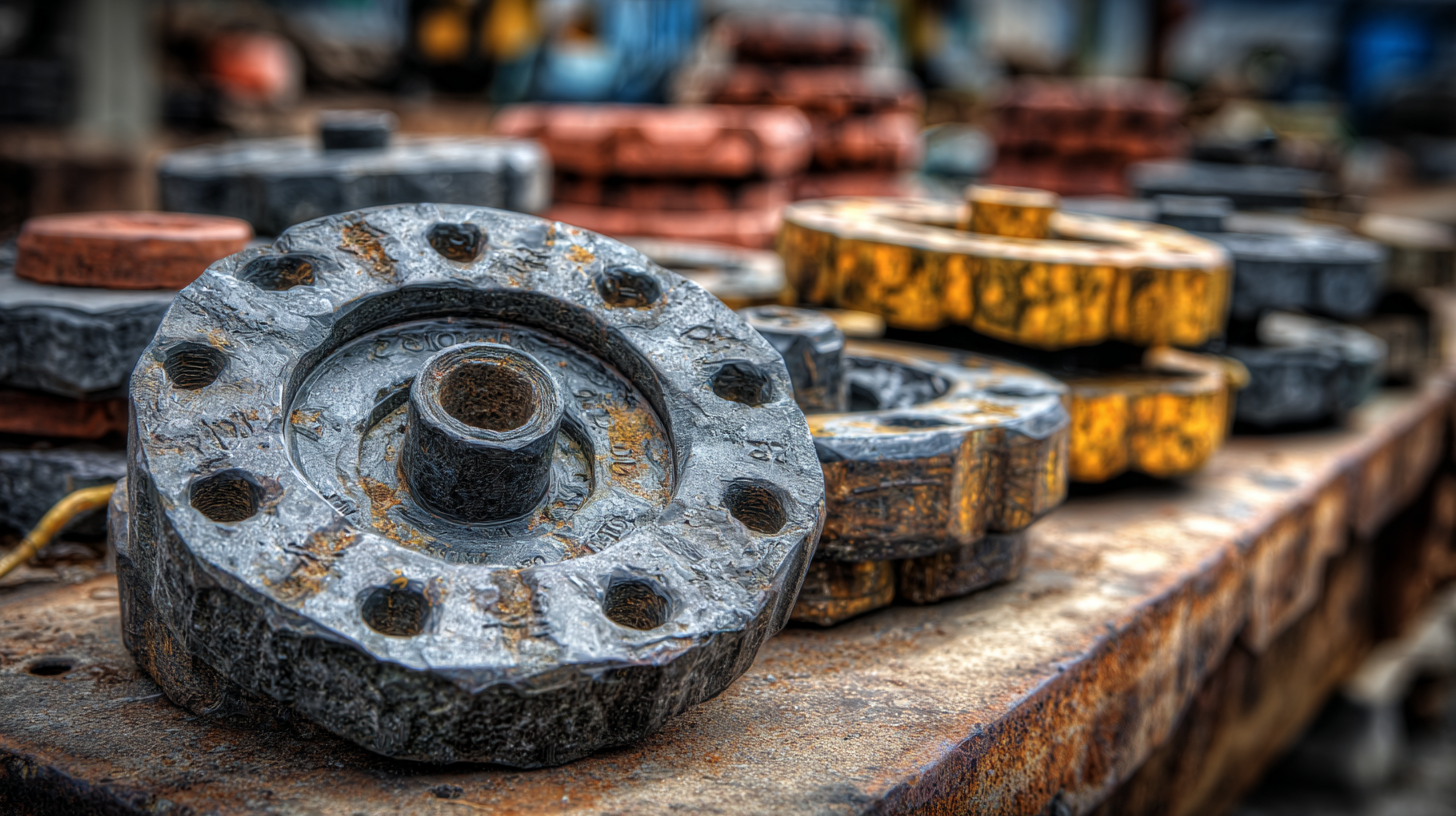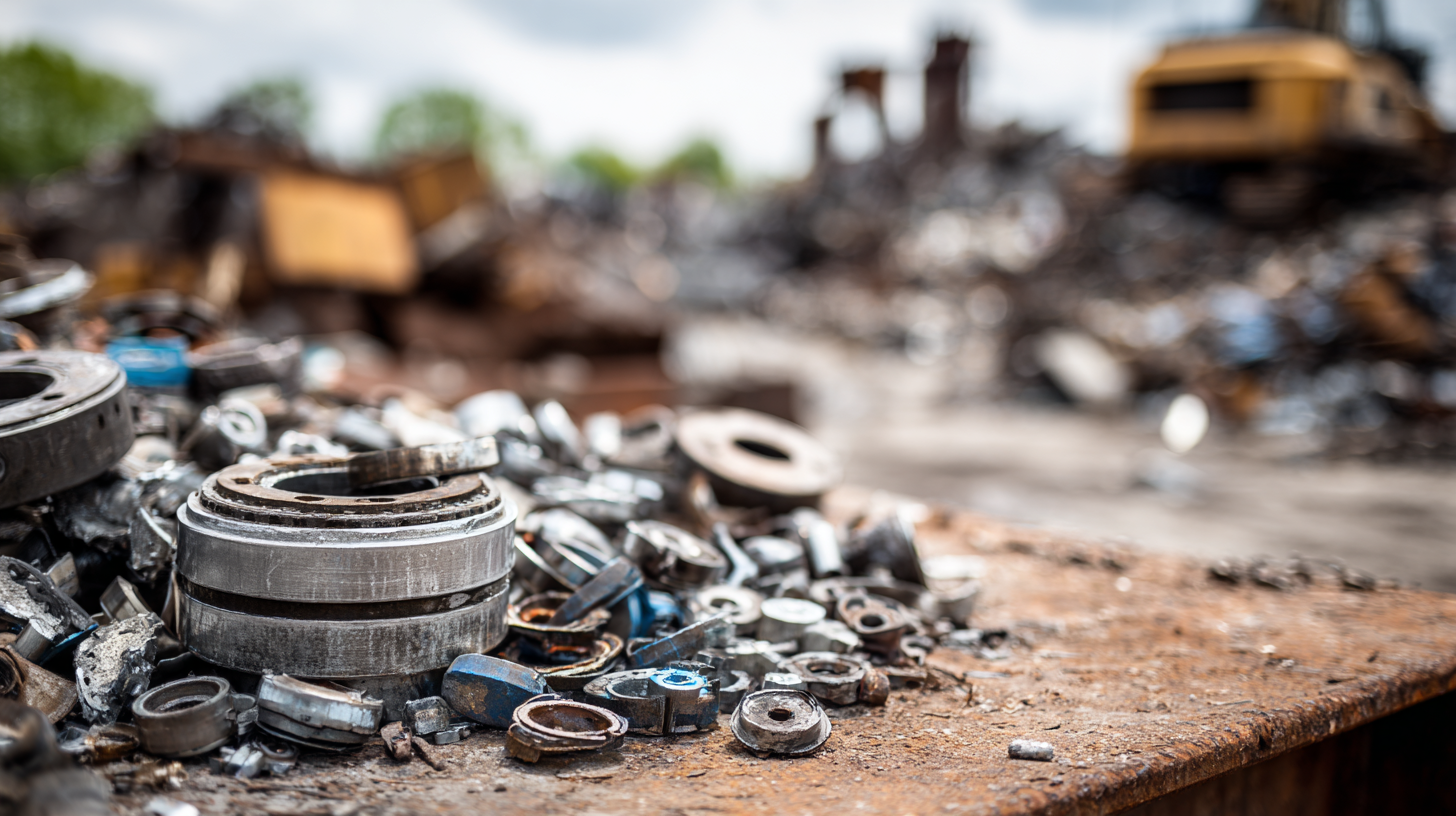
-
Home
-
About Us
-
Products
-
News
-
Blog
-
Contact Us
Leave Your Message

In today's rapidly evolving industrial landscape, the emphasis on sustainability and efficient resource management has never been greater. One of the most effective strategies for achieving these goals is the use of high-quality Scrap Metal Recycling Wear Parts. These components not only enhance the durability and performance of machinery but also significantly contribute to reducing environmental impact by promoting recycling and responsible resource utilization. However, many organizations encounter various challenges associated with selecting and implementing these wear parts, leading to inefficiencies and increased operational costs. This blog will explore the numerous benefits of incorporating the best Scrap Metal Recycling Wear Parts into sustainable operations while addressing common problems faced by businesses in this realm. By understanding these issues and recognizing the advantages of effective wear parts, companies can better position themselves for a greener future.

When it comes to scrap metal recycling, the quality of wear parts plays a crucial role in ensuring operational efficiency and sustainability. High-quality wear parts not only improve the productivity of recycling processes but also significantly reduce maintenance costs. According to a report by the Institute of Scrap Recycling Industries (ISRI), employing superior wear components can increase the lifespan of machinery by up to 30%, thereby minimizing downtime and optimizing recovery rates. This translates to both economic benefits and less environmental waste, aligning with sustainability goals.
One of the key advantages of investing in best-in-class wear parts is their ability to withstand the harsh conditions of scrap processing. Durable materials such as high-carbon steel and carbide composites can significantly reduce wear and tear, leading to fewer replacements and lower long-term costs. A study from the National Institute of Standards and Technology (NIST) indicates that high-quality wear parts can improve operational efficiency by as much as 25%, directly benefiting bottom lines while promoting eco-friendly practices.
Tip: Regularly assess your equipment and consider upgrading to high-quality wear parts to enhance performance and reduce costs. Additionally, implement a proactive maintenance schedule to extend the life of your machinery. Investing in research and development can help your operations stay ahead of industry trends and adapt to evolving standards in scrap metal recycling.
The effective management of scrap metal recycling operations is crucial for both economic and environmental sustainability. Recent case studies illustrate how innovative techniques can transform challenges into opportunities. For instance, a company has successfully converted contaminated iron sludge into a valuable resource, showcasing the dual benefits of enhancing economic returns while promoting eco-friendly practices. By implementing new filtration technologies and optimizing waste pricing systems, this operation not only mitigates waste but also aligns with broader environmental goals.
Tips for successful scrap metal recycling include investing in advanced processing technologies that enhance material recovery rates. Additionally, establishing a robust source management strategy can significantly reduce contamination in recyclable materials, ensuring higher quality outputs. Streamlining operations through technology enables a more efficient workflow, ultimately leading to increased profitability while helping achieve sustainability objectives.
Moreover, engaging the community in recycling efforts can create a culture of sustainability. Educational initiatives that promote the benefits of recycling and waste reduction can contribute to a collective effort in minimizing environmental impact. This collaborative approach not only fosters awareness but can lead to innovative solutions and practices being adopted widely, ensuring that scrap metal recycling becomes a staple of sustainable operations.

The impact of wear parts on environmental sustainability and efficiency in scrap metal recycling cannot be understated. High-quality wear parts are essential for maintaining the durability and reliability of recycling machinery, ultimately reducing downtime and resource waste. According to a report from the Scrap Metal Recycling Association, equipment failures due to inferior wear parts can result in operational inefficiencies that cost the industry approximately $1.4 billion annually. Implementing better wear parts not only enhances equipment lifespan but also decreases the energy consumption associated with machinery operation, contributing to a smaller carbon footprint.
Tip: Regularly assess the condition of wear parts in your recycling processes to identify opportunities for upgrades that align with sustainability goals. Investing in advanced materials for wear parts can lead to significant savings over time, both financially and environmentally.
Furthermore, the U.S. Environmental Protection Agency estimates that recycling metals reduces greenhouse gas emissions by 300 million metric tons annually. This highlights the critical role that robust wear parts play in maintaining efficient recycling operations. When machinery operates at peak performance, the recycling rate increases, leading to a more sustainable approach to scrap metal management.
Tip: Incorporate a preventative maintenance schedule that focuses on replacing worn-out parts before they cause significant wear and tear on machinery. This proactive approach not only minimizes downtime but can also optimize operational efficiency, aligning business practices with environmental sustainability initiatives.
Investing in durable recycling equipment is a cost-effective strategy that can significantly enhance the sustainability of operations in the scrap metal recycling industry. High-quality wear parts are designed to withstand harsh working conditions and continuous use, reducing the frequency of replacements and maintenance. This longevity not only minimizes operational disruptions but also leads to substantial financial savings in the long run. By ensuring that machinery operates efficiently, companies can significantly lower their operational costs while maximizing productivity.
Moreover, the initial investment in top-tier recycling equipment often pays off by improving the overall efficiency of the recycling process. Durable parts minimize breakdowns, ensuring a consistent flow of operations and reducing the potential loss of revenue due to downtime. Additionally, efficient machinery reduces energy consumption, leading to lower utility bills and a smaller carbon footprint. Thus, while the upfront costs may seem higher, the long-term benefits in terms of cost savings and environmental impact make investing in the best scrap metal recycling wear parts an intelligent choice for sustainable operations.

Innovations in wear parts technology are revolutionizing the scrap metal recycling industry, enhancing efficiency and sustainability. Advanced materials such as high-strength alloys and composite materials are now being used to manufacture wear parts that boast superior durability and longevity. According to a report by the International Recycling Bureau, utilizing high-performance wear parts can potentially reduce operational downtime by 30%, leading to significant cost savings for recycling facilities. This improved reliability ensures that operations can continue uninterrupted, ultimately increasing the overall throughput of recycled materials.
Incorporating smart technology into wear parts design is another breakthrough. Wear sensors embedded in parts can provide real-time data on their performance and wear levels. This technology allows recycling facilities to proactively manage their maintenance schedules, thereby avoiding costly breakdowns and inefficiencies. A study by the American Metal Market revealed that recycling plants equipped with smart wear parts reported a 25% increase in material recovery rates compared to those using traditional components.
**Tips:** Regularly assess the condition of your wear parts and invest in innovative materials that enhance durability. Transitioning to smart wear technology could provide valuable insights for optimizing your recycling processes, leading to more sustainable operations.
| Wear Part Type | Material | Durability (Hours) | Recycling Efficiency (%) | Sustainability Impact |
|---|---|---|---|---|
| Shredder Blades | High Carbon Steel | 4000 | 98 | Reduces energy usage by 20% |
| Crusher Hammers | Alloy Steel | 3500 | 95 | Improves material recovery rates |
| Screen Mesh | Stainless Steel | 5000 | 90 | Supports circular economy initiatives |
| Conveyor Belts | Rubber Composite | 6000 | 92 | Reduces waste generation |